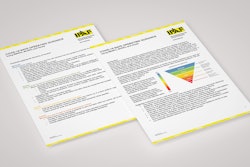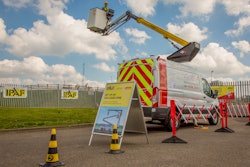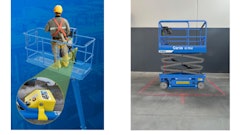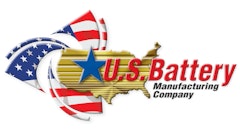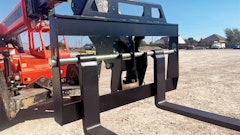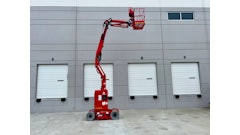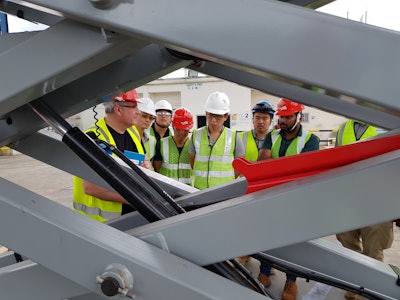
“Plan your work and work to your plan.” This simple statement is not followed as often as you may think. Companies spend a lot of time and resources on planning, but many do not cross the finish line, failing to implement their plans properly – a true sign that the plan was not complete.
Companies are aware that they have a duty to provide their workers with a workplace that is free from recognized hazards that are causing or likely to cause death or serious physical harm. This starts with the identification of hazards in the workplace through a process known as a risk assessment.
The process of a risk assessment must be completed by a qualified person, who will identify hazards, evaluate risk, develop control measures, and communicate the results with affected persons. This process is detailed in the ANSI/SAIA A92.22 MEWP safe use standard with the following stages of an RA:
- Identify the task to be undertaken
- Select an appropriate MEWP
- Assess the risks associated with the task
- Identify control measures
- Identify safe work procedures
- Rescue from height
- Communicate the results
One of these stages that is typically not completed is “identify safe work procedures.” Most risk assessments identify the risks associated with the task and develop control measures to eliminate or mitigate the risks from those hazards, but they often fail when it comes to applying the results of the plan to safe work procedures, including any contingencies required in carrying out the identified tasks.
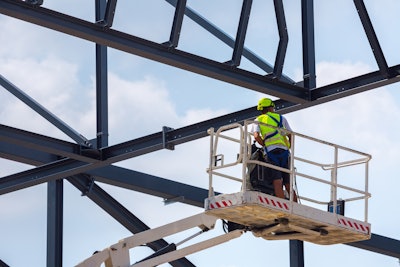
Completing a MEWP operation risk assessment will identify many potential hazards and corresponding control measures. The following is an example:
Task: Operating the MEWP outdoors
Hazard: Potential high winds in the work area
Risk: Tip-over of the MEWP
Control Measure:
- Use an anemometer to determine wind speed
- Do not operate the MEWP if wind speed is expected to exceed 28 mph
While the control measure is clear and concise to some, many may struggle with implementing the control measure. What is an anemometer? How is it used? Where should it be used? How do I know if gusts are going to exceed 28 mph? Can I operate at 27 mph wind speeds? Is a weather forecast sufficient data to plan the work? There are too many potential questions that a control measure will miss that a safe work procedure should address. Let’s look at a step-by-step safe work procedure for this control measure:
Step 1. Identify potential wind hazards prior to start of work:
- Check weather forecast daily and as needed during the course of operations to identify the potential risk of high wind gusts that may exceed 28 mph.
- Identify potential areas where wind gusts can be locally high (including funneling/wind tunnel effects around buildings or between objects).
- Be prepared for unexpected wind gusts.
Step 2. Identify potential wind hazards during the work shift:
- If forecast predicts increasing winds, monitor updated forecasts during operations.
- Be visually aware of changing wind speeds and familiarize yourself with the Beaufort scale.
- Have an anemometer available to measure actual wind speeds on site and at the height of platform operations (wind speeds at height are usually higher than on the ground).
Step 3. Have an anemometer available for operator to monitor actual wind speeds at the platform:
- Purchase a handheld/portable anemometer.
- Have additional batteries available.
- Train operator on the use of the anemometer.
- Verify daily that an anemometer is on site and is functioning correctly.
Step 4. Define standard operation procedure (SOP) parameters regarding specific MEWP wind speed limitations:
- Set forecasted wind speeds of greater than 15 mph as a requirement to have operators check an anemometer in the work platform, i.e. take hourly measurement or as needed.
- Set a maximum wind speed measurement of 20 mph gusts when MEWP operations at height to halt proceedings.
Step 5. ID task-specific limitations during potential wind speed forecasts:
- The MEWP supervisor will direct MEWP operation limitations due to wind speeds. Carrying of any objects that can increase wind resistance in the work platform or a task with materials that might become unmanageable in windy conditions must be addressed or rescheduled.
- Wind may reduce the ability to hear others from the ground. The use of cell phones or a loud audible horn to communicate with the operator may be required.
- Other risks from winds, such as dust that could impair MEWP occupants’ vision, chemicals, or compounds that can be harmful, etc., must be managed accordingly.
Step 6. Ensure MEWP supervisor and operator are trained and qualified for the task:
- MEWP supervisors and operator must have documentation that they have completed required training as per ANSI/SAIA A92.22-20.
- MEWP operators must be assessed on a regular basis to ensure their proficiency in proper operations with wind speeds.
- MEWP supervisors should deliver a toolbox talk to workers regarding safe work with MEWPs addressing wind gusts.
Step 7. Monitor and supervise MEWP operations to ensure compliance:
- MEWP supervisors are required to assess MEWP operators on a regular basis. One specific occasion is when potential high wind speeds are forecasted during MEWP operations.
- When MEWP operations do occur during potentially a high wind forecast, MEWP supervisor will verify use of anemometer by MEWP operators.
Hopefully, this example provides both awareness and guidance on the need and value of developing safe work procedures for your workers to follow to ensure your workplace is as safe as it can be from recognized hazards.
For more information about creating a MEWP Risk Assessment, view or download the IPAF guidance via https://www.ipaf.org/en-us/resource-library/risk-assessment-best-practice-guide.
![Tony Groat Edited 5b57430ec070e[1] Headshot](https://img.forconstructionpros.com/files/base/acbm/fcp/image/2024/06/Tony_Groat_edited.5b57430ec070e_1_.667c30792412c.png?auto=format%2Ccompress&crop=faces&fit=crop&h=48&q=70&w=48)





